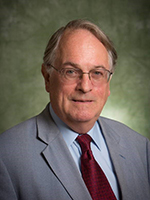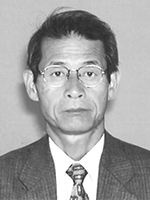Papers and presentations
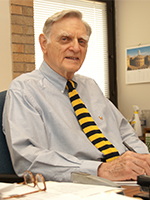 John B. Goodenough
John B. Goodenough
John B. Goodenough was awarded the 2019 Nobel Prize in Chemistry with M. Stanley Whittingham and Akira Yoshino “for the development of lithium-ion batteries.” His current research explores the relationships between the chemical, structural and electrical properties of solids, addressing fundamental solid state problems in order to design new materials that can enable an engineering function. Goodenough received the Royal Society’s Copley Medal, the Japan Prize, National Medal of Science, the Japan Prize, and is a member of the Royal Society, England, and the National Societies of France, Spain, and India.
ECS member since 2013 – Awarded Life
ECS Fellow (2016)
Received ECS’s Olin Palladium Award (1999)
A complete list of John Goodenough’s ECS publications is at 2019 Nobel Laureates in Chemistry, a collection highlighting the scientific contributions of the 2019 Nobel Laureates in Chemistry published by The Electrochemical Society.
(MORE: View the ECS Masters interview with John B. Goodenough)
M. Stanley Whittingham
M. Stanley Whittingham was awarded the 2019 Nobel Prize in Chemistry with John B. Goodenough and Akira Yoshino “for the development of lithium-ion batteries.” His current research focuses on improving electrochemical device storage to make renewable solar and wind energy viable, and to expand electric vehicle range while making them more affordable. He received the Turnbull Award, ISSI Senior Scientist Award, Thomson Reuters Citation Laureate, and is a Member of the National Academy of Engineering.
ECS member since 1970 – Awarded Life
ECS Fellow (2004)
Received ECS’s Battery Division Research Award (2002)
Received ECS’s Young Author Award (1971)
A complete list of Stanley Whittingham’s ECS publications is at 2019 Nobel Laureates in Chemistry, a collection highlighting the scientific contributions of the 2019 Nobel Laureates in Chemistry published by The Electrochemical Society.
(MORE: View the ECS Masters interview with M. Stanley Whittingham)
Akira Yoshino
Akira Yoshino was awarded the 2019 Nobel Prize in Chemistry with John B. Goodenough and M. Stanley Whittingham “for the development of lithium-ion batteries.” Today, Yoshino is an honorary fellow at the Asahi Kasei Corporation. He continues his research, looking at ways that the lithium-ion battery can address global environmental problems. Yoshino received the Japan Prize and the European Inventor Prize as well as the Global Energy Prize and European Inventor Award.
ECS member since 2016
Received ECS’s Battery Division Technology Award, 1999
A complete list of Akira Yoshino’s ECS publications is at 2019 Nobel Laureates in Chemistry, a collection highlighting the scientific contributions of the 2019 Nobel Laureates in Chemistry published by The Electrochemical Society.
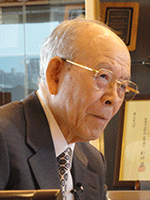 Isamu Akasaki
Isamu Akasaki
Isamu Akasaki was awarded the 2014 Nobel Prize in Physics, along with Hiroshi Amano and Shuji Nakamura, for “the invention of efficient blue light-emitting diodes, which has enabled bright and energy-saving white light sources.” Akasaki is also known for his work in semiconductor technology and has been awarded the Kyoto Prize in Advanced Technology and the IEEE Edison Medal. He shared the 2021 Queen Elizabeth Prize for Engineering with Shuji Nakamura, Nick Holonyak, Jr., M. George Craford, and Russell Dupuis for the development of LED lighting.
ECS Member since 1985 – Awarded Life
Received ECS’s Solid State Science and Technology Award (now, Gordon E. Moore Medal for Outstanding Achievement in Solid State Science and Technology) (1999)
JES 141 (8) 1994 2266-2271
“Widegap Column‐ III Nitride Semiconductors for UV/Blue Light Emitting Devices”
(Note: both Isamu Akasaki and Hiroshi Amano authored this paper)
JES 137 (5) 1990 1639-1641
“Growth and Luminescence Properties of Mg‐Doped GaN Prepared by MOVPE”
(Note: both Isamu Akasaki and Hiroshi Amano authored this paper)
JES 133 (9) 1986 1956-1960
“Epitaxial Growth and Properties of AlxGa1 − x N by MOVPE”
JES 112 (7) 1965 757-759
“Etching Characteristics and Light Figures of the {111} Surfaces of GaAs”
(MORE: Read our interview with Akasaki, where he discusses blue LEDs and his life in science.)
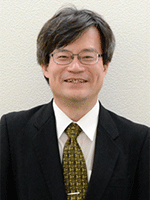 Hiroshi Amano
Hiroshi Amano
Hiroshi Amano successfully used the difficult-to-handle semiconductor gallium nitride to create efficient blue LEDs, along with Isamu Akasaki and Shuji Nakamura. Amano joined Akasaki’s group in 1982 as an undergraduate student, which inspired his work on growth, characterization, and device applications of group III nitride semiconductors.
JES 141 (8) 1994 2266-2271
“Widegap Column‐ III Nitride Semiconductors for UV/Blue Light Emitting Devices”
(Note: both Isamu Akasaki and Hiroshi Amano authored this paper)
JES 137 (5) 1990 1639-1641
“Growth and Luminescence Properties of Mg‐Doped GaN Prepared by MOVPE”
(Note: both Isamu Akasaki and Hiroshi Amano authored this paper)
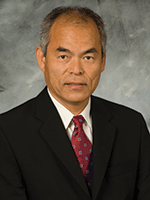 Shuji Nakamura
Shuji Nakamura
Shuji Nakamura is a Japanese-born American electronic engineer and inventor specializing in the field of semiconductor technology. Together with Isamu Akasaki and Hiroshi Amano, he received the 2014 Nobel Prize in Physics. Nakamura also worked on green LEDs, and is responsible for creating the white LED and blue laser diodes used in Blu-ray Discs and HD DVDs.
Plenary Lecture – Last Vegas, 2010 (218th meeting)
“Current and future Status of Nitride-based Solid State Lighting“
ECS Meeting Abstracts 2009 (San Francisco, 215th meeting) E7-885
“Piezoelectric Field in Semi-Polar InGaN/GaN Quantum Wells”
JES 148 (4) 2001 G185-G189
“Effect of Oxygen on Thermocapillary Convection in a Molten Silicon Column under Microgravity”
JES 143 (2) 1996 722-725
“Asymmetric Distribution of Oxygen Concentration in the Si Melt of a Czochralski System”
JES 134 (9) 1987 2320-2323
“Low Temperature Silicon Epitaxy Using Si2H6”
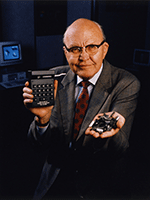 Jack Kilby
Jack Kilby
Jack Kilby was an electrical engineer who, along with Robert Noyce, realized the first integrated circuit while working at Texas Instruments in 1958. Through this development, Kilby greatly influenced the shape of modern computing and later went on to develop the technology for pocket calculators. In 2000, he was awarded the Nobel Prize in Physics.
Plenary Lecture – Shanghai, China, 2001 (ECS International Semiconductor Technology Conference – ISTC 2001)
Kilby, Jack S. “Origins of the Integrated Circuit,” Proceedings of the Eighth International Symposium on Silicon Materials Science and Technology, Vol. 98-1, (The Electrochemical Society, April 1998) pp. 342-349
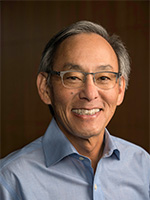 Steven Chu
Steven Chu
Steven Chu was awarded the 1997 Nobel Prize in Physics, along with Claude Cohen-Tannoudji and William D. Phillips, “for the development of methods to cool and trap atoms with laser light.” His research interests are in atomic, molecular, and optical physics. The twelfth, and longest serving, U.S. Secretary of Energy, he was the first scientist to hold a Cabinet position.
ECS Member since 2017 – Awarded Life
2017 ECS Lecture – National Harbor, MC (232nd ECS Meeting) – “The Role of Electrochemistry in our Transition to Sustainable Energy”
2017 Keynote Speaker at the Leadership Luncheon – National Harbor, MC (232nd ECS Meeting)
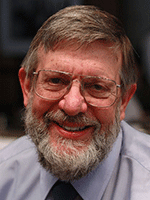 William D. Phillips
William D. Phillips
William D. Phillips was awarded the 1997 Nobel Prize in Physics, along with Claud Cohen-Tannoudji and Steven Chu, “for the development of methods to cool and trap atoms with laser light.” His technique slows the movement of gaseous atoms in order to better study them. Phillips is an advocate of clean energy research, technology, and demonstration.
Plenary Lecture – Washington, DC, 2001 (199th meeting)
“Almost Absolute Zero: the Story of Laser Cooling and Trapping ”
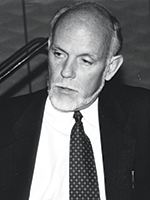 Richard Smalley
Richard Smalley
Richard Smalley, along with Robert Curl and Harold Kroto, won the 1996 Nobel Prize in Chemistry “for their discovery of fullerenes.” Namely, the team’s development led to the discovery of a new form of carbon, the buckminsterfullerene, also know as the “buckyball.” Starting in the late 1990s, Smalley advocated for the need for cheap, clean energy, which he described as the number one problem facing humanity in the 21st century.
ECS established the Nanocarbons Division Richard E. Smalley Research Award in 2006 to encourage excellence in fullerenes, nanotubes, and carbon nanostructures research.
Plenary Lecture – New Orleans, 1993 (184th meeting)
JES 147 (8) 2000 2845-2852
“Solid‐State Electrochemistry of the Li Single Wall Carbon Nanotube System”
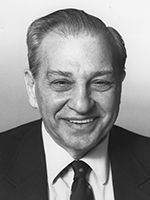 Rudolph A. Marcus
Rudolph A. Marcus
Rudolph A. Marcus won the 1992 Nobel Prize in Chemistry “for his contributions to the theory of electron transfer reactions in chemical systems.” He was notified about the prize while attending the 182nd ECS Meeting in Toronto, Ontario, Canada. Marcus’ more recent research focuses on theories of chemical reactions, highlighting the formulation of theories to explain new and sometimes unexpected experimental results.
Past ECS member
Plenary Lecture – Los Angeles, 1996 (189th meeting)
Plenary Lecture – Los Angeles, 1979 (156th meeting)
JES 109 (7) 1962 628-634
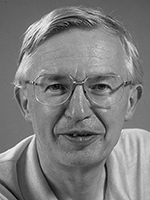 Jean-Marie Lehn
Jean-Marie Lehn
Jean-Marie Lehn, Donald Cram, and Charles Pedersen won the 1987 Nobel Prize in Chemistry “for their development and use of molecules with structure-specific interactions of high selectivity.” Lehn was an early innovator in the field of supramolecular chemistry (i.e. the chemistry of host-guest molecular assemblies created by intermolecular interactions.)
Plenary Lecture – Paris, 1997 (192nd Meeting and 1st Joint International Meeting with ISE)
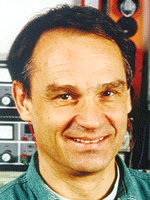 Gerd Binnig
Gerd Binnig
Gerd Binnig received the 1986 Nobel Prize in Physics “for the design of the scanning tunneling microscope,” an instrument for imaging surfaces at the atomic level. The Nobel committee stated that because of this development, “entirely new fields are opening up for the study of the structure of matter.”
Plenary Lecture – Paris, 2003 (203rd meeting)
“Nanotechnology: The Path to Handling Complexity?“
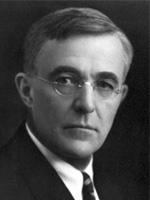 Irving Langmuir
Irving Langmuir
Irving Langmuir received the 1932 Nobel Prize in Chemistry “for his discoveries and investigations in surface chemistry.” Langmuir’s studies embraced chemistry, physics, and engineering and were largely the outgrowth of studies of vacuum phenomena. In seeking the atomic and molecular mechanisms of these he investigated the properties of adsorbed films and the nature of electric discharges in high vacuum and in certain gases at low pressures.
1911 American Electrochemical Society (ECS) Meeting, Toronto, Canada – Speaker, “Thermal Conduction and Convection in Gases at Extremely High Temperatures”
1913 American Electrochemical Society (ECS) Meeting, Denver, CO – Lead Author, “Flow of Heat thru Furnace Walls: The Shape Factor”
1913 American Electrochemical Society (ECS) Meeting, Atlantic City, NJ – Speaker, “Convection and Radiation of Heat”
1916 American Electrochemical Society (ECS) Meeting, Washington DC – Speaker, “The Relation Between Contact Potentials and Electrochemical Action”
Langmuir, I. (1913). Convection and Radiation of Heat. Transactions of the American Electrochemical Society, Vol. III (pp. 299-332). Philadelphia, PA: The American Electrochemical Society.
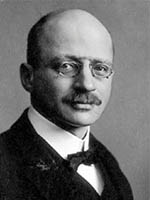 Fritz Haber
Fritz Haber
Fritz Haber received the Nobel Prize in Chemistry in 1918 “for the synthesis of ammonia from its elements.” His work had a significant effect on the large scale synthesis of fertilizers to assist with food production. However, its use by Germany to manufacture explosives in World War I was controversial.
1902 American Electrochemical Society (ECS) Meeting, Niagara Falls, NY – Keynote Speaker, “The Phenomenon of the Formulation of Metallic Dust from Cathodes”
1904 American Electrochemical Society (ECS) Meeting, St Louis, MO – Author, “The Carbon Cell”
Haber, F. (1902). The Phenomenon of the Formation of Metallic Dust from Cathodes. Transactions of the American Electrochemical Society, Vol. II (pp. 189-196). Philadelphia, PA: The American Electrochemical Society.
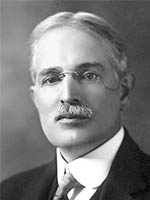 Theodore William Richards
Theodore William Richards
Theodore William Richards received the 1914 Nobel Prize in Chemistry, “in recognition of his accurate determinations of the atomic weight of a large number of chemical elements.” Richards introduced quartz apparatus, the bottling device, and the nephelometer (an instrument for measuring turbidity) which improved the technique of gravimetric atomic weight determinations. His research on the atomic weight of lead helped confirm the existence of isotopes.
1904 American Electrochemical Society (ECS) Meeting, St Louis, IL – Author, “The Relation of the Hypothesis of Compressible Atoms to Electrochemistry”
1912 American Electrochemical Society (ECS) Meeting, New York City, NY – Speaker, “The Electrochemical Behavior of Very Concentrated Thallium Amalgams”






